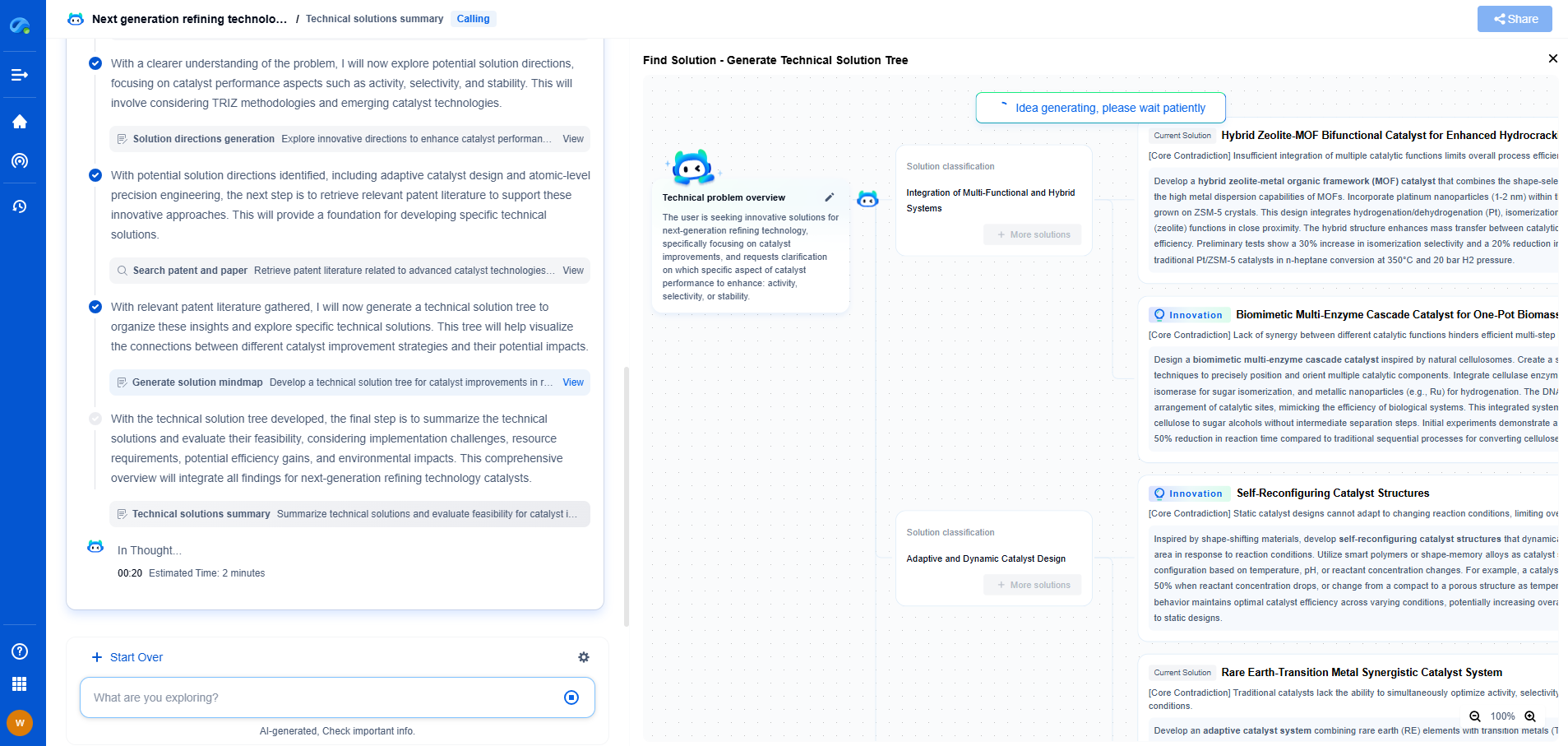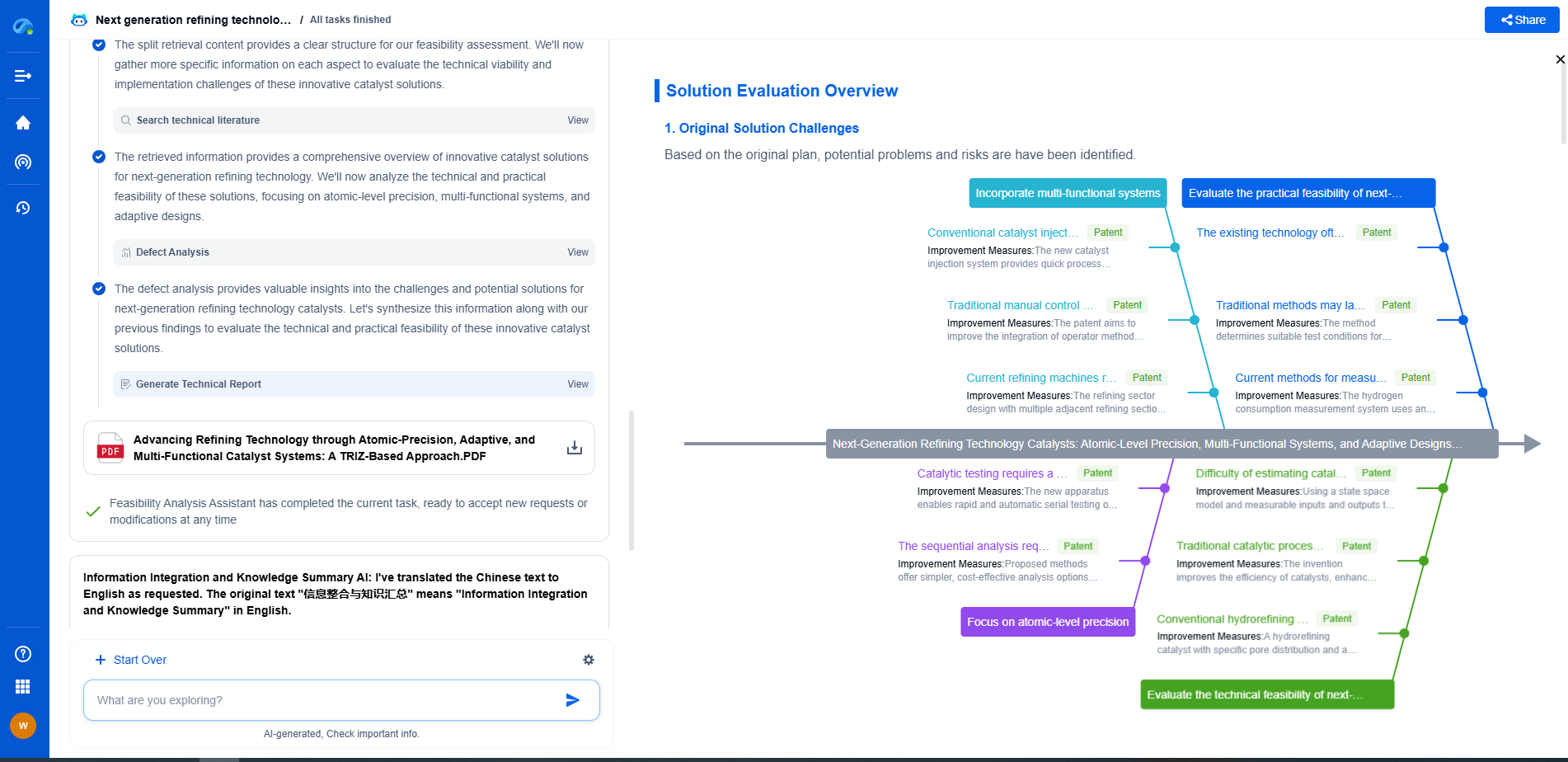Vacuum-Jacketed vs. Foam-Based Insulation: Pros and Cons for Gas Storage
JUL 21, 2025 |
When it comes to storing gases, maintaining the right temperature and ensuring optimal insulation is crucial. Two popular methods for insulating gas storage systems are vacuum-jacketed insulation and foam-based insulation. Each method comes with its own set of advantages and disadvantages, making it essential for industries to weigh their options carefully. This article aims to explore the pros and cons of both vacuum-jacketed and foam-based insulation for gas storage, helping you make an informed decision.
Understanding Vacuum-Jacketed Insulation
Vacuum-jacketed insulation involves creating a vacuum layer around the storage container. This vacuum acts as a thermal barrier, significantly reducing heat transfer and maintaining the temperature of the stored gas.
Pros of Vacuum-Jacketed Insulation
1. Superior Thermal Performance: Vacuum-jacketed insulation offers excellent thermal resistance, minimizing heat transfer and ensuring that the stored gas remains at the desired temperature for extended periods.
2. Durability: The absence of materials like foam that can degrade over time makes vacuum-jacketed systems highly durable, often resulting in a longer lifespan.
3. Space Efficiency: Due to its high efficiency, vacuum-jacketed insulation requires less thickness to achieve the same level of insulation as other methods, saving valuable space.
Cons of Vacuum-Jacketed Insulation
1. High Initial Cost: The technology and materials required for vacuum-jacketed insulation can be expensive, leading to a high initial investment.
2. Complexity in Installation: Installing vacuum-jacketed systems can be complex and may require specialized skills and equipment.
3. Maintenance Challenges: Any breach in the vacuum system can lead to a loss of insulation effectiveness, and repairing such breaches can be challenging.
Exploring Foam-Based Insulation
Foam-based insulation consists of various types of foam materials applied around the storage container. This type of insulation is widely used in many industrial applications due to its versatility.
Pros of Foam-Based Insulation
1. Cost-Effectiveness: Foam-based insulation is generally more affordable than vacuum-jacketed systems, making it an attractive option for budget-conscious projects.
2. Easy Installation: Unlike vacuum-jacketed insulation, foam-based systems are relatively easy to install and do not require specialized equipment or skills.
3. Versatility: Foam insulation can be tailored to fit various shapes and sizes of storage containers, offering flexibility in design and application.
Cons of Foam-Based Insulation
1. Lower Thermal Efficiency: Foam-based insulation is not as effective as vacuum-jacketed systems in minimizing heat transfer, which might lead to higher energy consumption.
2. Susceptibility to Degradation: Over time, foam materials can degrade due to environmental factors, potentially reducing their insulating effectiveness.
3. Bulkiness: To achieve a comparable level of insulation as vacuum-jacketed systems, foam insulation might require greater thickness, which can be a disadvantage in space-constrained environments.
Conclusion: Making the Right Choice
Choosing between vacuum-jacketed and foam-based insulation for gas storage depends on various factors, including budget, space constraints, and desired thermal performance. Vacuum-jacketed insulation offers superior thermal efficiency and durability but comes at a higher cost and complexity. On the other hand, foam-based insulation provides a more economical and versatile solution, albeit with lower thermal efficiency and potential degradation over time.
Ultimately, the decision should be based on a careful evaluation of the specific needs and constraints of your gas storage application. By understanding the pros and cons of each insulation method, you can select the most appropriate solution to ensure safe, efficient, and cost-effective gas storage.
As clean energy and decarbonization drive new breakthroughs in hydrogen storage, CO₂ transport, and alternative gas carriers, keeping pace with technical trends and patent activity is critical to staying competitive.
Patsnap Eureka helps innovators in compressed gas storage, high-pressure tank design, gas sensor systems, and pipeline materials accelerate research by offering instant, AI-powered insights into global patents, related technologies, and emerging white spaces.
🚀 Bring speed, precision, and strategic foresight to your innovation and IP decision-making in the gas transport sector—try Eureka today and unlock a smarter path forward.
- R&D
- Intellectual Property
- Life Sciences
- Materials
- Tech Scout
- Unparalleled Data Quality
- Higher Quality Content
- 60% Fewer Hallucinations
Browse by: Latest US Patents, China's latest patents, Technical Efficacy Thesaurus, Application Domain, Technology Topic, Popular Technical Reports.
© 2025 PatSnap. All rights reserved.Legal|Privacy policy|Modern Slavery Act Transparency Statement|Sitemap|About US| Contact US: help@patsnap.com

